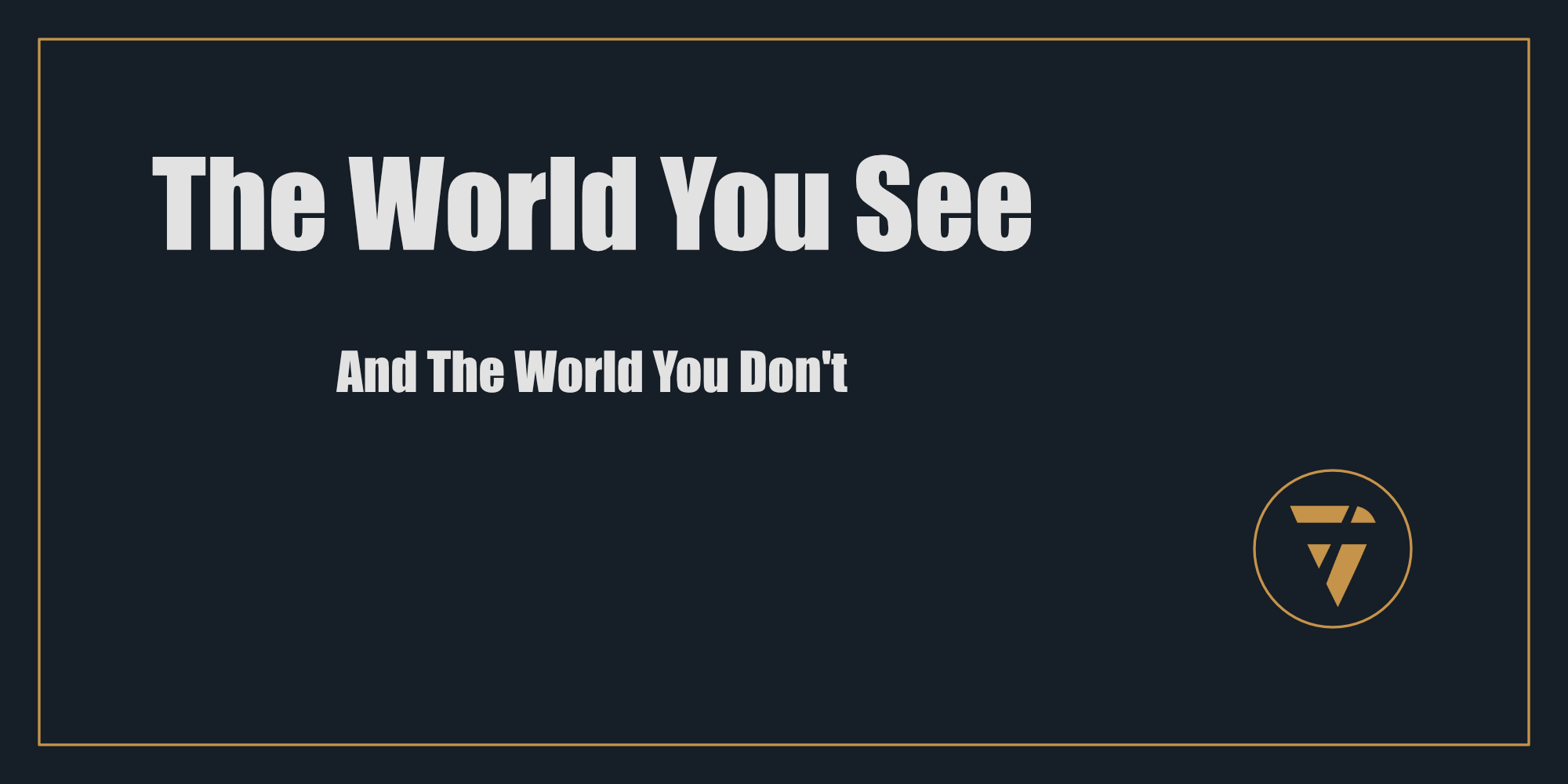The World You See
And The World You Don’t

The world is shifting under our feet. Political instability, climate urgency, economic volatility, and technological acceleration, all these forces collide to create a landscape as treacherous as it is rife with potential. To lead, adapt, or even simply endure, we must train ourselves to see two things: what is painfully obvious, and what is carefully concealed.
This is not just about leadership; it’s survival. The tectonic plates of history are moving, and while some brace against the tremors, others mine them for opportunity. Awareness—the ability to face what’s difficult, and uncover what’s hidden—is the modern compass. It allows us to navigate uncharted territory and ensure we emerge not just intact, but ahead.
This is a call to action for those who understand that what you don’t see will happen anyway, and what you uncover will shape the future.
Fractures in the Obvious:
We live in a time when everything feels on display, problems glare at us from every corner. Social inequality, supply chain crises, the widening chasm between the "haves" and "have-nots." Yet we’re paralyzed. Why? Because looking directly at these fractures demands a response, and action is uncomfortable.
Consider the global shift in work culture. Remote work wasn’t a trend, it was a fault line. Organizations that dismissed its deeper implications—about autonomy, trust, and employee well-being—find themselves struggling to attract talent. The cracks were visible for years, but leaders avoided looking closely, opting instead to patch problems without addressing root causes.
Action:
- Name the fracture: whether in your organization, community, or personal life. Once named, it can’t be ignored.
- Replace reaction with strategy. For every immediate response, plan a deeper, systemic one. For example, don’t just offer higher wages—redesign the experience of work itself.
Labyrinth of the Hidden:
What’s harder than seeing what’s obvious? Finding what isn’t. As the surface-level problems demand attention, critical opportunities often go unnoticed. Beneath the headlines of chaos and disruption lies an undercurrent of innovation. The invisible is where the bold thrive.
Take climate change. It is a crisis, but also a crucible for reinvention. Startups creating carbon technology, industries transforming waste into resources, nations reshaping energy infrastructures—they are succeeding because they saw not just the problem, but the market hidden within the problem.
The only thing that changes behaviour is profit.
Action:
- Ask unasked questions. “What are we missing?” should be a daily mantra.
- Institutionalize curiosity. Build teams whose job is not just to execute, but to explore.
State of Blindness:
In this moment, two forms of blindness plague decision-makers:
- Crisis Myopia: Obsessing over immediate challenges while ignoring long-term trajectories.
- Excessive Focus on the Visible: Overvaluing data and trends that are easy to measure but irrelevant to deeper truths.
The COVID-19 pandemic was a crash course in both forms of blindness. Organizations that only reacted to surface symptoms—like temporary remote work setups—found themselves ill-equipped for the systemic shift that followed. Meanwhile, those that leaned into complexity—redesigning supply chains or overhauling health and safety protocols—became the new standard.
Strategic Advice:
- Embrace strategic mindfulness. Use frameworks that balance the immediate with the emergent.
- Measure what matters. Redefine KPIs to include both quantitative metrics (revenue, retention) and qualitative ones (resilience, innovation).
Seeing the Moment for What It Is:
The era we’re living in is a crucible. It will burn away the excess, refine the essential, and test every leader, entrepreneur, and citizen. The question is not whether you can endure—it’s whether you can transform.
A profound example of transformation lies in Africa’s fintech boom. Countries bypassed traditional banking infrastructure, leveraging mobile technology to create financial inclusion for millions. They didn’t follow the established rules; they rewrote them by seeing what others didn’t.
This is not just a story of resilience. It’s a parable for those ready to look beyond immediate limitations and into boundless possibilities.
Here’s the truth: everything you fear is real, but so is everything you hope for. The cracks and the labyrinth are not separate; they’re one system. To win, you must embrace both.
- Ask yourself: What am I avoiding, and why? The answer will point you toward your most urgent work.
- Build systems for discovery: Commit resources to uncover what others are missing. In today’s world, curiosity is not a luxury—it’s a strategy.
Every decision you make shapes the world, whether you mean to or not. Stop letting fear of the obvious, or the complexity of the hidden paralyze you. Start now. Look deeply and act decisively.
The world as we know it is changing faster than we can measure. To stand still is to fall behind. But to look, to see, to understand—this is where strength is found.
What will you choose to see today?
Build awareness and unlock opportunities in the chaos.
This Substack is reader-supported. To receive new posts and support my work, consider becoming a free or paid subscriber.
This is what I’m working on. Tell me what you think, I enjoy the conversation! Subscribe and follow the work in real time.
Thanks!
B
Leadership isn’t reacting to what’s visible; it’s navigating what’s concealed. What’s your blind spot? What happens if you don’t find it?
PS -





